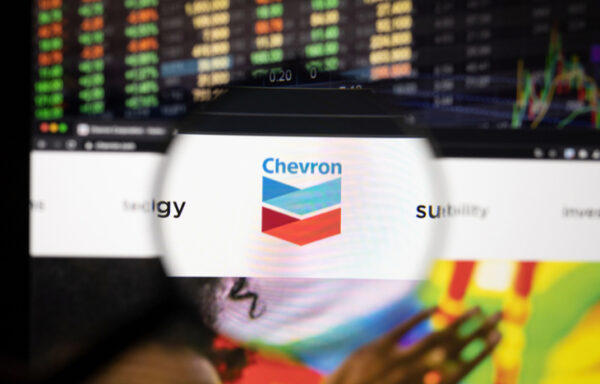How to Build Wealth with Dividend-Paying Stocks
I recently received an email from a reader in his 50s who plans to retire in four years. He told me he’s just getting started in investing and wanted some ideas for “rapid growth.”
Yikes!
Hopefully, he’s got a large 401(k), a pension, or an inheritance. Four years isn’t enough time to get your finances ready for retirement if you’re starting from scratch.
While I like a good speculation as much as anyone, the reader’s approach flies in the face of how to actually make serious money in the markets…
The Dividends Statistics Speak for Themselves
If you’re investing in stocks for the long term, the best thing you can do* is buy stable companies with a track record of increasing their dividends and then reinvest those dividends.
Sure, they may only be 3% or 4% dividends, but you’ll be shocked at the way they can create significant wealth. I’ll show you exactly what I mean in just a moment, but first, check out these eye-popping statistics from Bloomberg LP on reinvested dividends:
- From 2000 to 2010, reinvested dividends were responsible for 87% of the S&P 500′s total return.
- From 1990 to 2010, reinvested dividends were responsible for 43% of the S&P 500′s total return.
- From 1871 to 2003, reinvested dividends were responsible for 97% of the stock market’s total return.
Let’s dig deeper…
What Dividend-Paying Companies Are Telling You
The first question to ask yourself when investing in dividends is whether you want stocks that are Dividend Aristocrats or Dividend Achievers.
- A Dividend Aristocrat is an S&P 500 company that has raised its dividend every year for the past 25 years.
- A Dividend Achiever has raised its dividend for the past 10 years.
By raising the dividend, company executives are telling you two things…
- They’re Committed to Shareholders: By returning capital to shareholders, companies are rewarding your faith in their business. Look at it this way: If you invested in your brother-in-law’s restaurant and the business was doing well, at some point, you’d expect him to start writing you checks. The same thing should hold true for the stocks you invest in.
- They’re Confident: Raising the dividend payment shows investors that the company’s management is confident in their business now and in the future. It also shows that they take their dividend policy seriously. Executives are keenly aware that Wall Street doesn’t like dividend cuts – and investors tend to punish dividend-choppers accordingly.
And of course, if you receive more dividends every year, your yield on cost (i.e. the yield on the price you originally paid) rises. For example, if you buy a $50 stock with a $2 annual dividend, your yield is 4%. But five years later, if the dividend has risen to $3, your yield on cost is 6%, even if the share price has doubled to $100.
So what’s the best way to go about investing in dividend-paying stocks?
Are You Looking At These Two Crucial Numbers? You Should Be…
After you’ve identified a Dividend Aristocrat or Achiever, you want to be sure the company can continue to pay its dividend.
You can do that by examining its payout ratio – the percentage of net income that’s paid out in dividends. (And when it comes to determining income, I prefer to use levered free cash flow, as it’s much harder for a company to manipulate the numbers.) Generally speaking, you want the payout ratio to be 75% or less. That gives the company plenty of room to still pay the dividend if net income or cash flow decrease in any given year.
So once you’re pocketing healthy dividends, why should you then reinvest them?
Simple…
A 12.4% Return While Underperforming the S&P 500
Here’s a great example of the power of compounding reinvested dividends. It comes from one of my favorite stocks – Genuine Parts Co. (NYSE: GPC).
Genuine Parts has increased its dividend every year for the past 56 years! That’s an extraordinary record. To put that in perspective, the last time it didn’t raise its dividend, President Eisenhower was in office, Elvis made his television debut on the Louisiana Hayride and The Lawrence Welk Show premiered.
Needless to say, Genuine Parts is a strong performer. Over the past 10 years alone, its share price has doubled.
But for the sake of our example, let’s assume a 9% annual increase in share price – less than the 9.6% average return of the S&P 500 over the past 50 years.
Let’s say you bought 200 shares today (with GPC’s share price around $57, that would cost you around $11,400), reinvested the dividend and the dividend increased by 6.8% per year (the average of the past 27 years)… what would happen? After 10 years, your original $11,400 investment would be worth $36,659.98, growing by an average of 12.4% per year – even while the stock underperformed the S&P 500 by over half a percentage point.
I used the underperformance figure simply to illustrate a point. I actually expect Genuine Parts to outperform the S&P 500 over the next decade.*
Now imagine if you have a portfolio of dividend-paying Aristocrat stocks doing the same thing. If you had a portfolio worth $100,000 and it had the same parameters of the Genuine Parts example above, but your portfolio simply matched the performance of the S&P, your $100,000 would nearly triple in 10 years.
And the power of compounding really gets going in the following decade, as your investment would soar to $891,000. That compares with $208,000 after 10 years and $520,000 after 20 years if you didn’t reinvest the dividend.
Unfortunately, for the reader I mentioned at the top, this is a long-term strategy and wouldn’t get him to his goals in four years. But if you have a longer timeframe, reinvesting in quality dividend-paying stocks is an excellent strategy for creating and preserving wealth.*
Good Investing,
Marc Lichtenfeld
*The views and opinions expressed in this article are those of the author and do not necessarily reflect the official position of professional analysts.
[adzerk-get-ad zone="245143" size="4"]About Marc Lichtenfeld
Marc Lichtenfeld is the Chief Income Strategist of Investment U’s publisher, The Oxford Club. He has more than three decades of experience in the market and a dedicated following of more than 500,000 investors.
After getting his start on the trading desk at Carlin Equities, he moved over to Avalon Research Group as a senior analyst. Over the years, Marc’s commentary has appeared in The Wall Street Journal, Barron’s and U.S. News & World Report, among other outlets. Prior to joining The Oxford Club, he was a senior columnist at Jim Cramer’s TheStreet. Today, he is a sought-after media guest who has appeared on CNBC, Fox Business and Yahoo Finance.
Marc shares his financial advice via The Oxford Club’s free daily e-letter called Wealthy Retirement and a monthly, income-focused newsletter called The Oxford Income Letter. He also runs four subscription-based trading services: Technical Pattern Profits, Lightning Trend Trader, Oxford Bond Advantage and Predictive Profits.
His first book, Get Rich with Dividends: A Proven System for Earning Double-Digit Returns, achieved bestseller status shortly after its release in 2012, and the second edition was named the 2018 Book of the Year by the Institute for Financial Literacy. It has been published in four languages. In early 2018, Marc released his second book, You Don’t Have to Drive an Uber in Retirement: How to Maintain Your Lifestyle without Getting a Job or Cutting Corners, which hit No. 1 on Amazon’s bestseller list. It was named the 2019 Book of the Year by the Institute for Financial Literacy.






